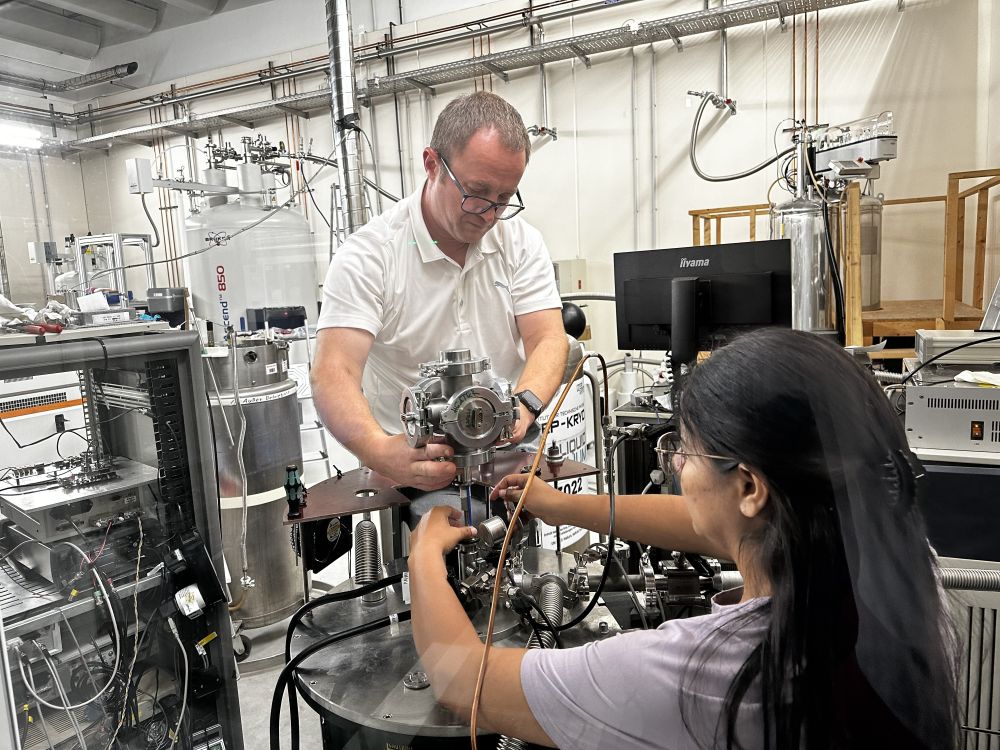Material Analysis: Discovery of a New Form of Nuclear Magnetic Resonance Spectroscopy
Nuclear magnetic resonance forms the basis of both nuclear magnetic resonance spectroscopy (NMR spectroscopy), which is used to analyze solids or organic molecules in liquids, and magnetic resonance imaging for medical diagnostic purposes. Researchers at Karlsruhe Institute of Technology (KIT) and Leipzig University have now, for the first time, experimentally demonstrated that extended measurement techniques are possible.
Fundamentals of nuclear magnetic resonance
Nuclear magnetic resonance is based on the fact that many atomic nuclei possess an intrinsic angular momentum – a spin – which can adopt two energy states in an external magnetic field: aligned with or against the direction of the field. When electromagnetic waves of a specific frequency are applied, whose energy precisely matches the energy difference between the two states of the atomic nucleus, the spins flip. The strength of absorption and emission of the electromagnetic waves can be measured. This material-dependent resonance frequency is referred to as the Larmor frequency.
New resonance frequencies in experiment
The researchers have now demonstrated that additional resonances exist, significantly deviating from the Larmor frequency. Although these had been theoretically predicted, they had not been observed due to their minimal effects. “We used a calcium fluoride single crystal as the sample material, in which fluorine atoms are arranged in a cubic lattice,” explains Dr. Benno Meier from Institute of Biological Interfaces 4 at KIT and head of a Helmholtz Young Investigator Group. “The key was that we repeatedly changed the strength of the magnetic field abruptly. This allowed us to discover resonance frequencies far from the Larmor frequency. The experimental results align excellently with theoretical predictions.”
Transferring these findings to electron spin resonance (ESR) spectroscopy, which is used in biophysics and materials science, also promises new applications.
jho, August 21, 2025

